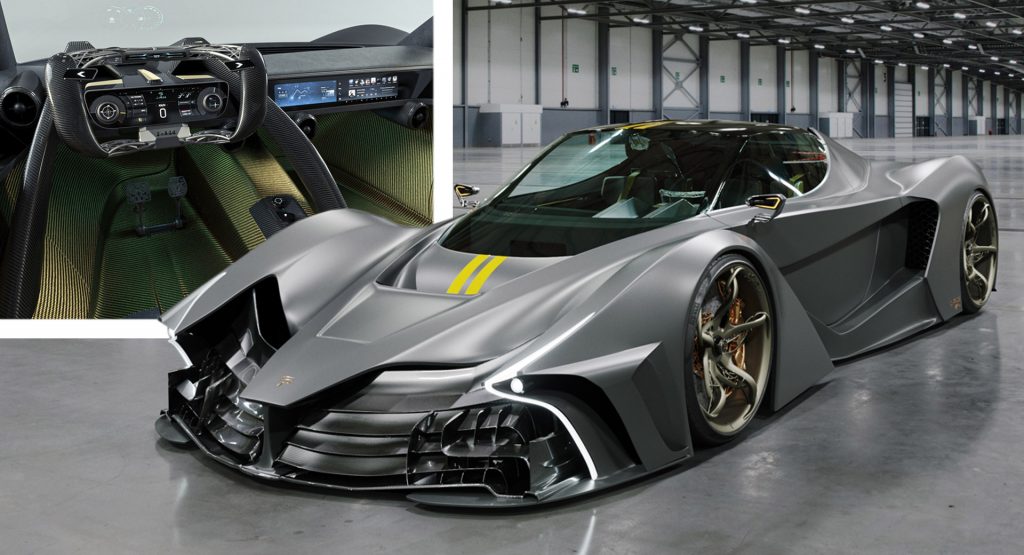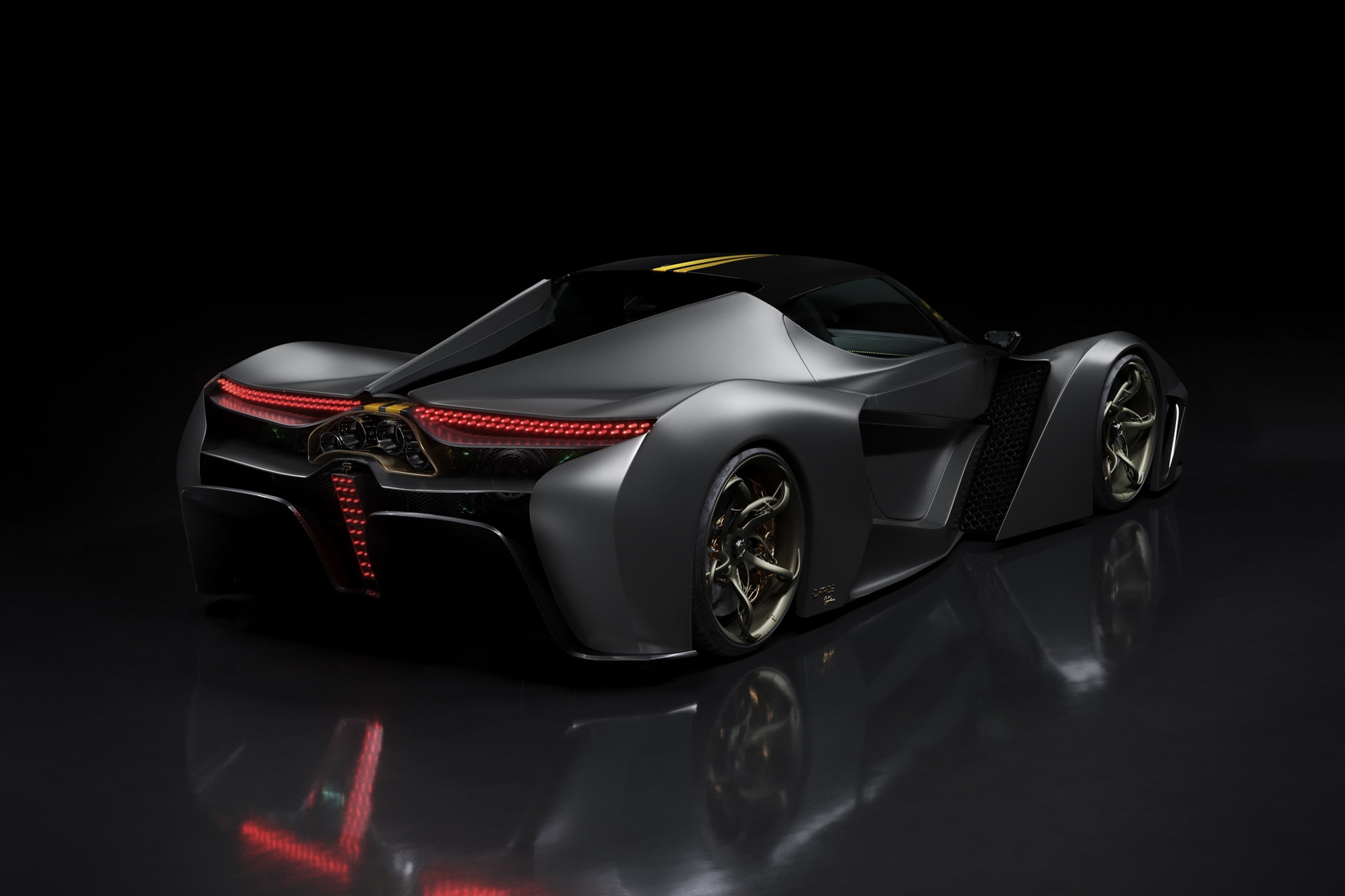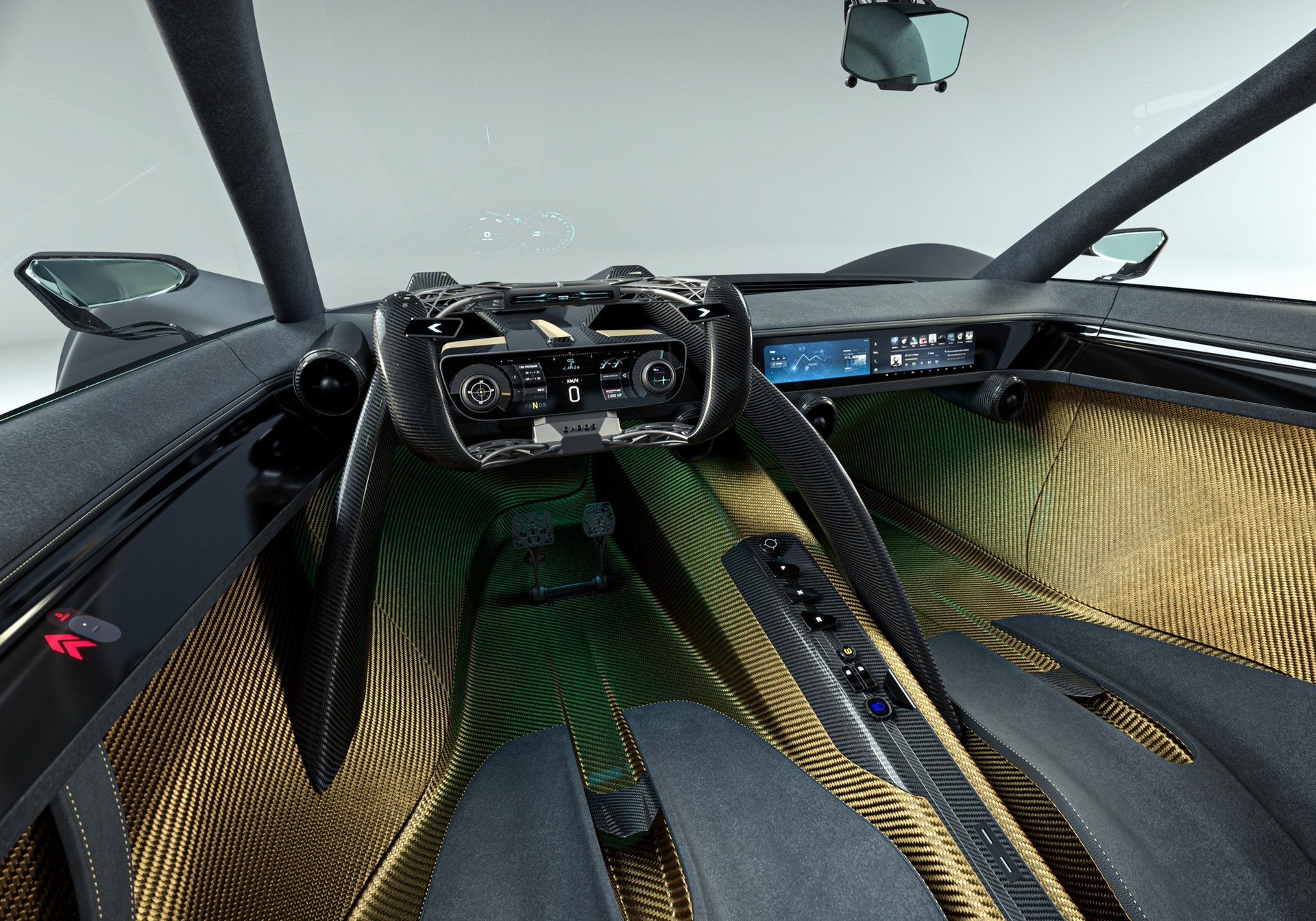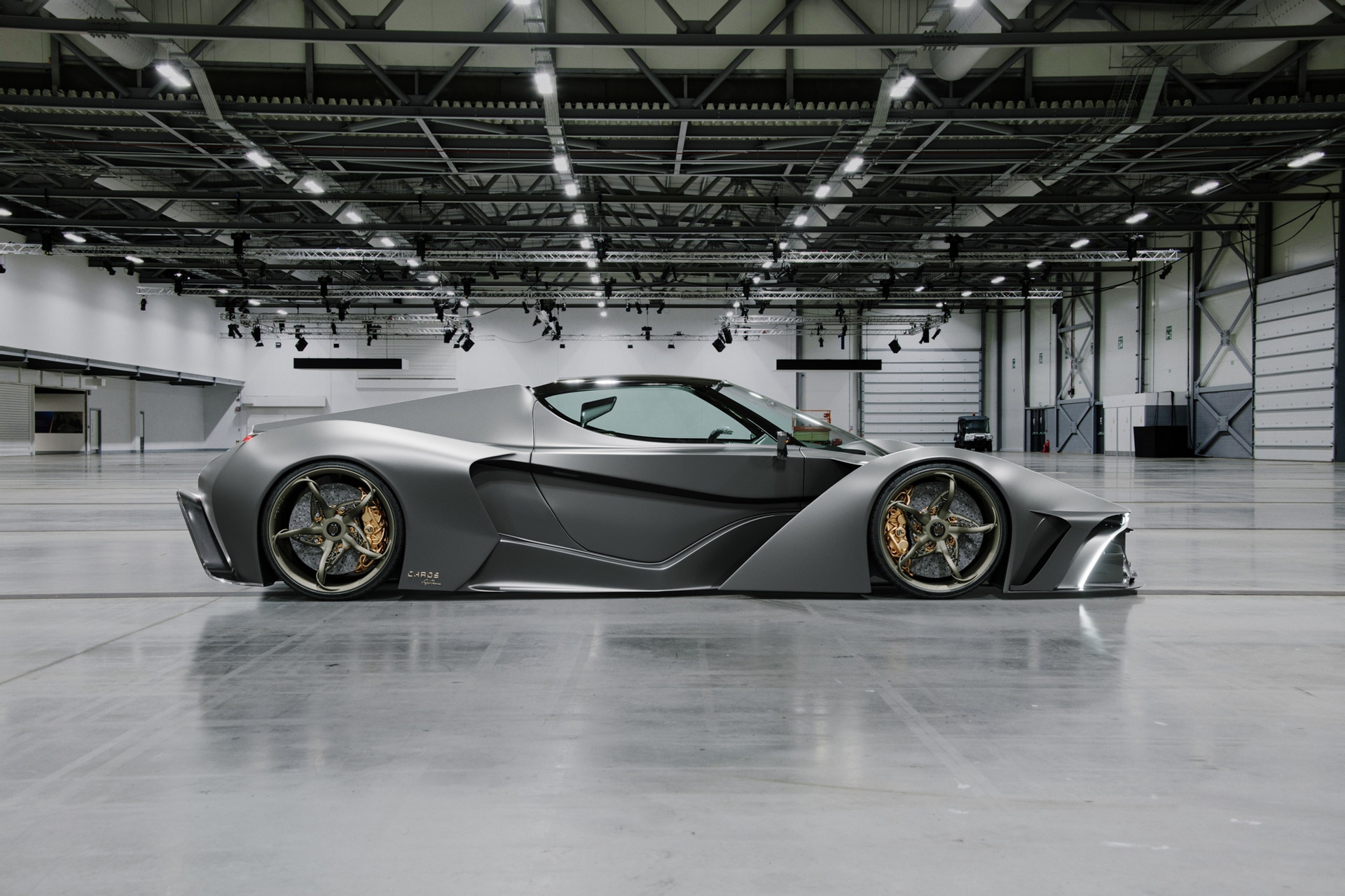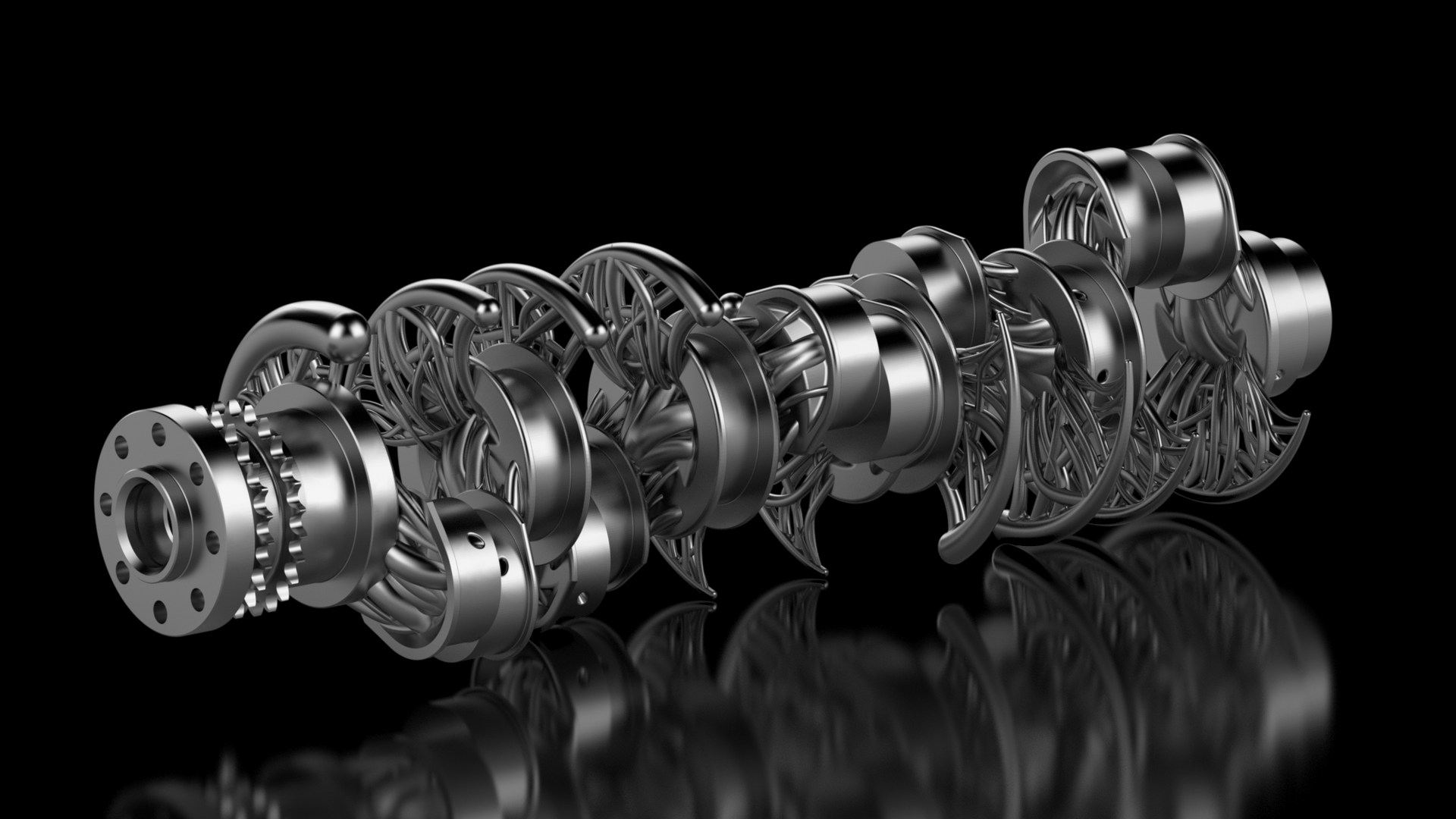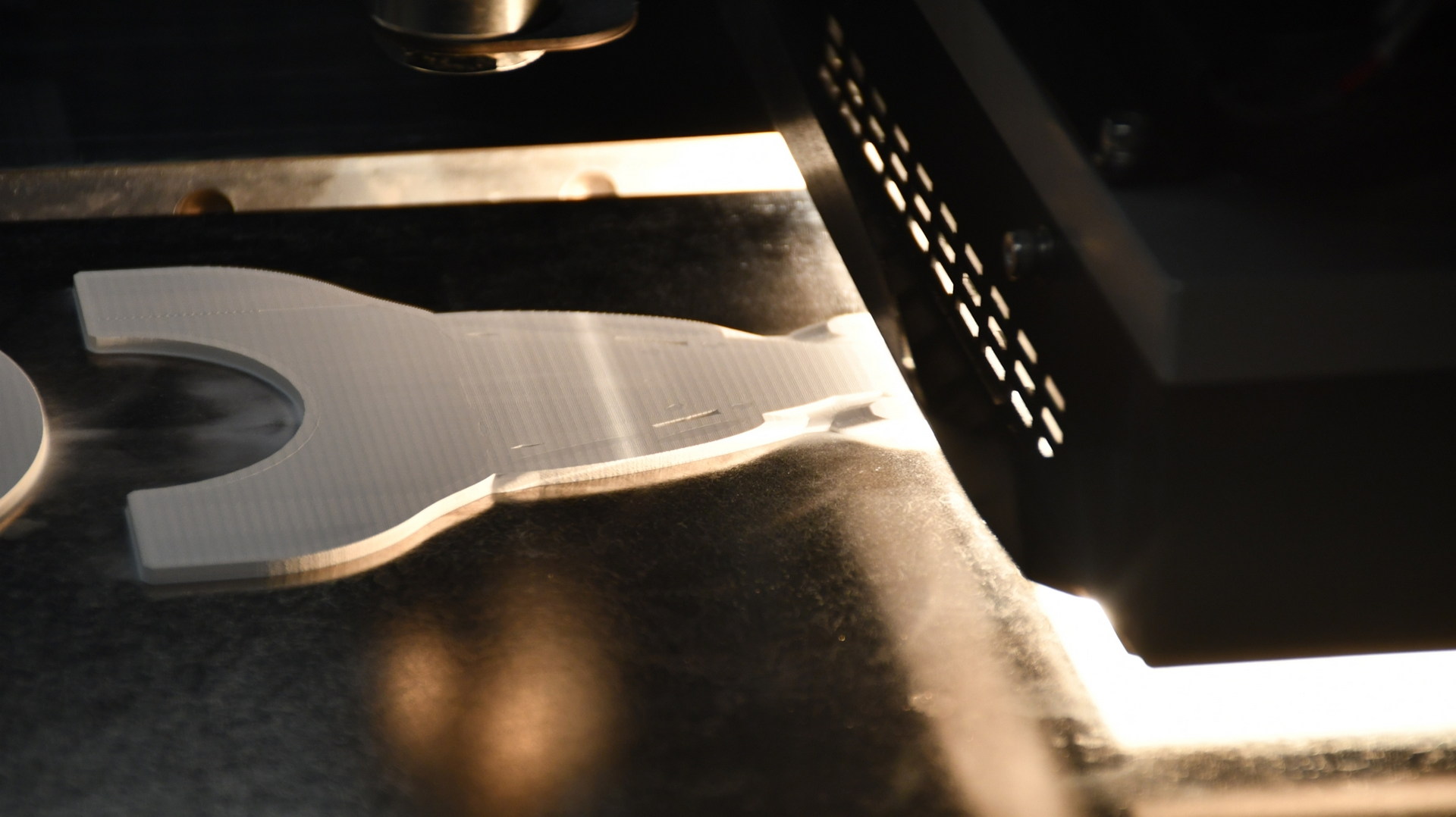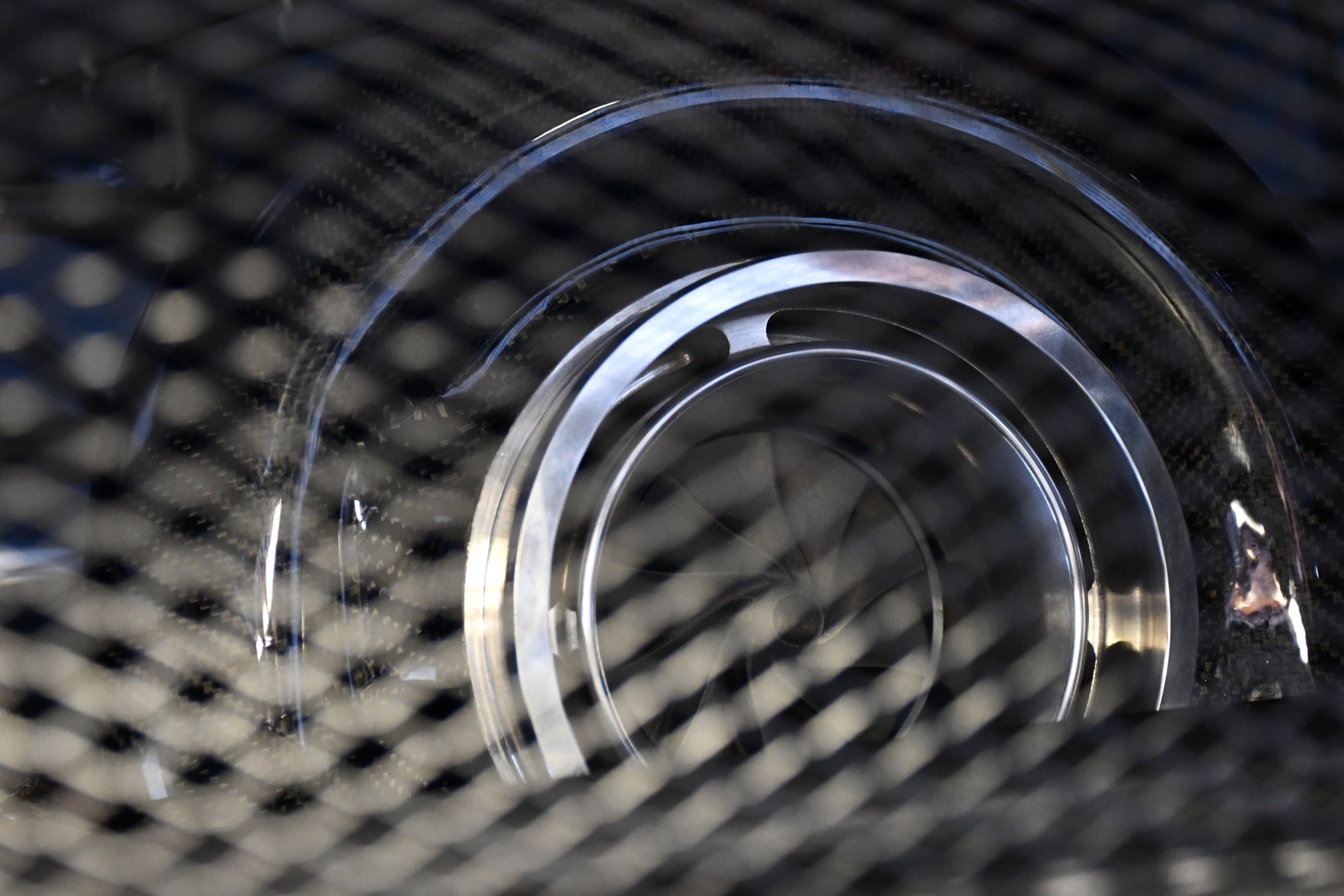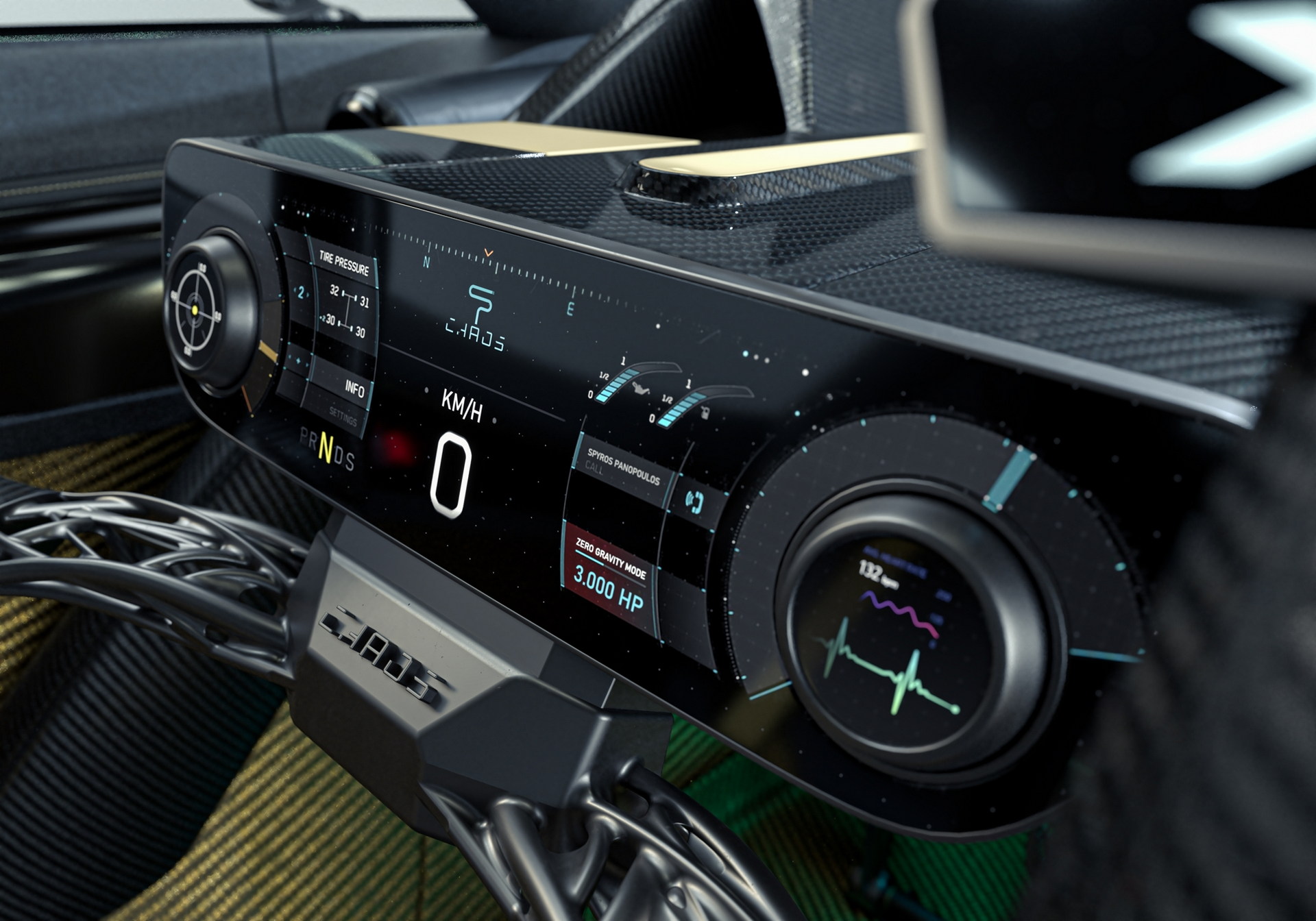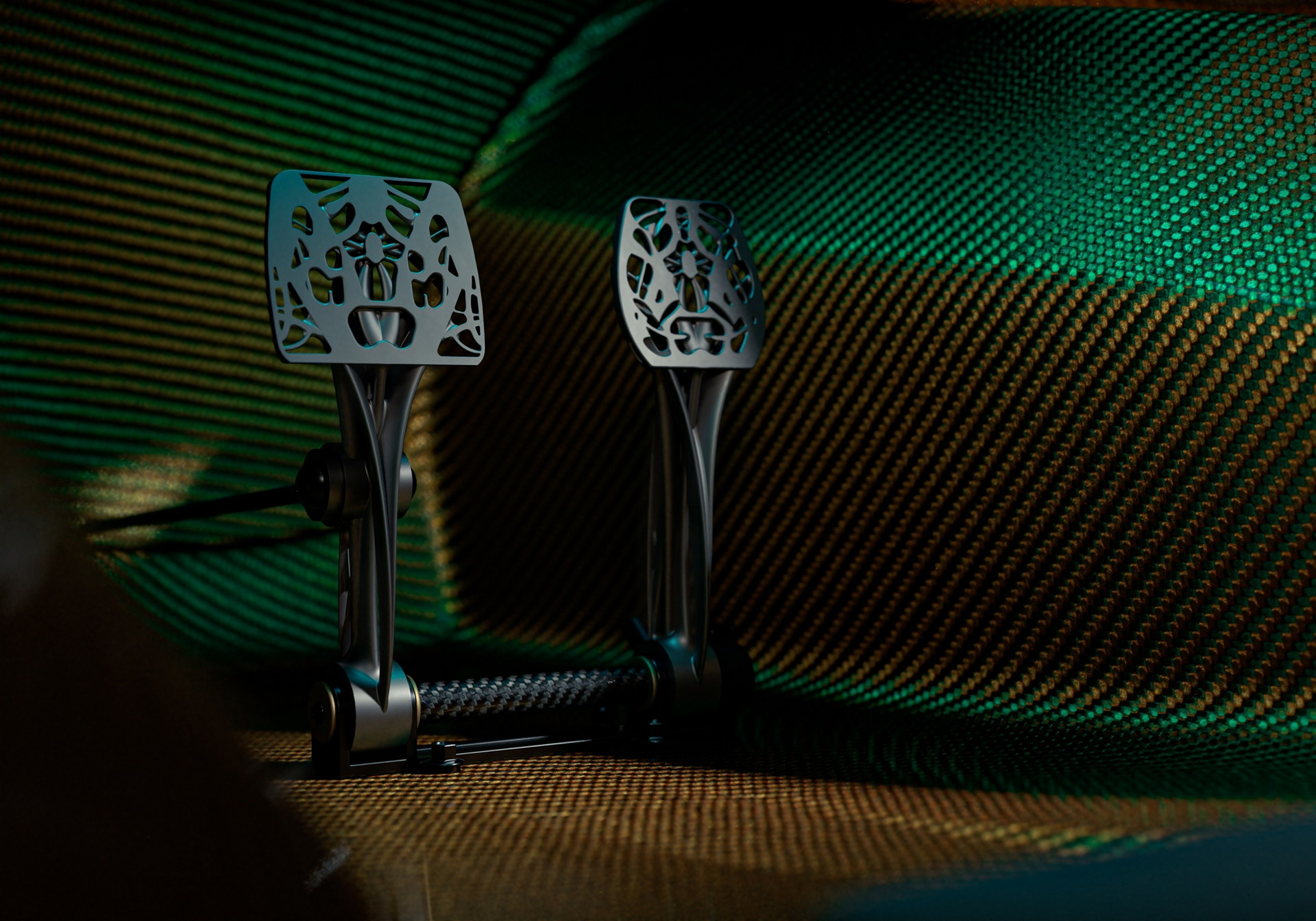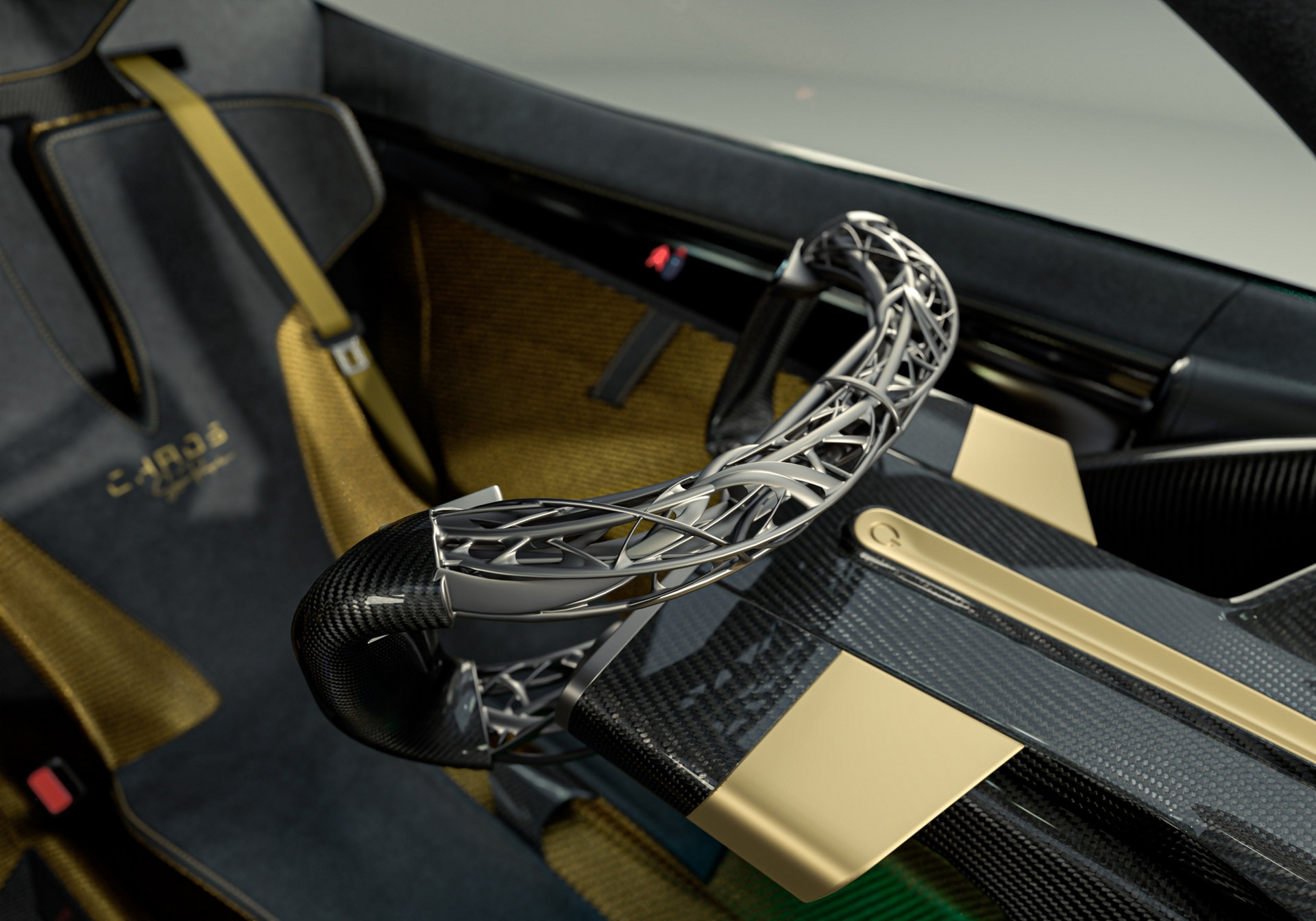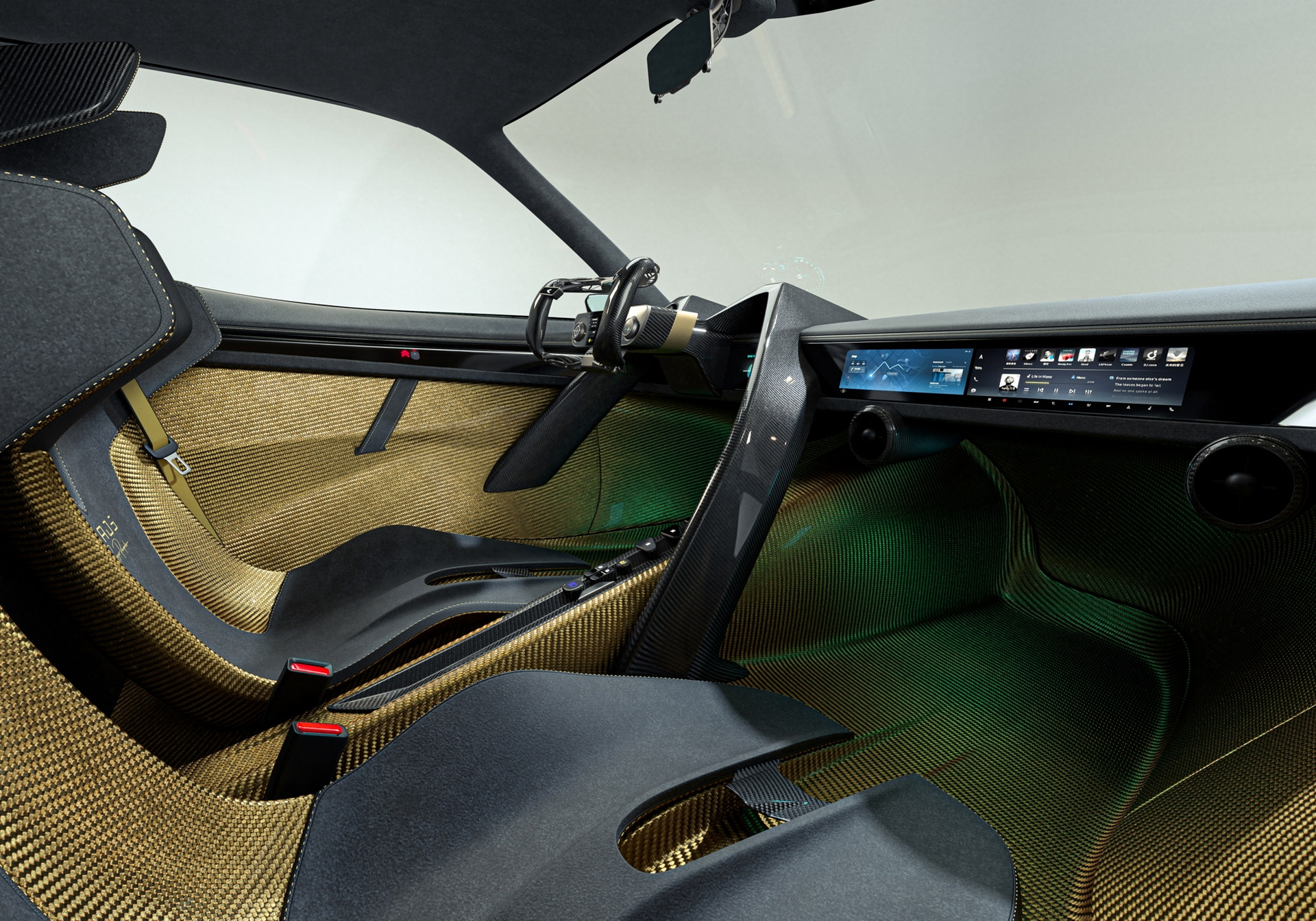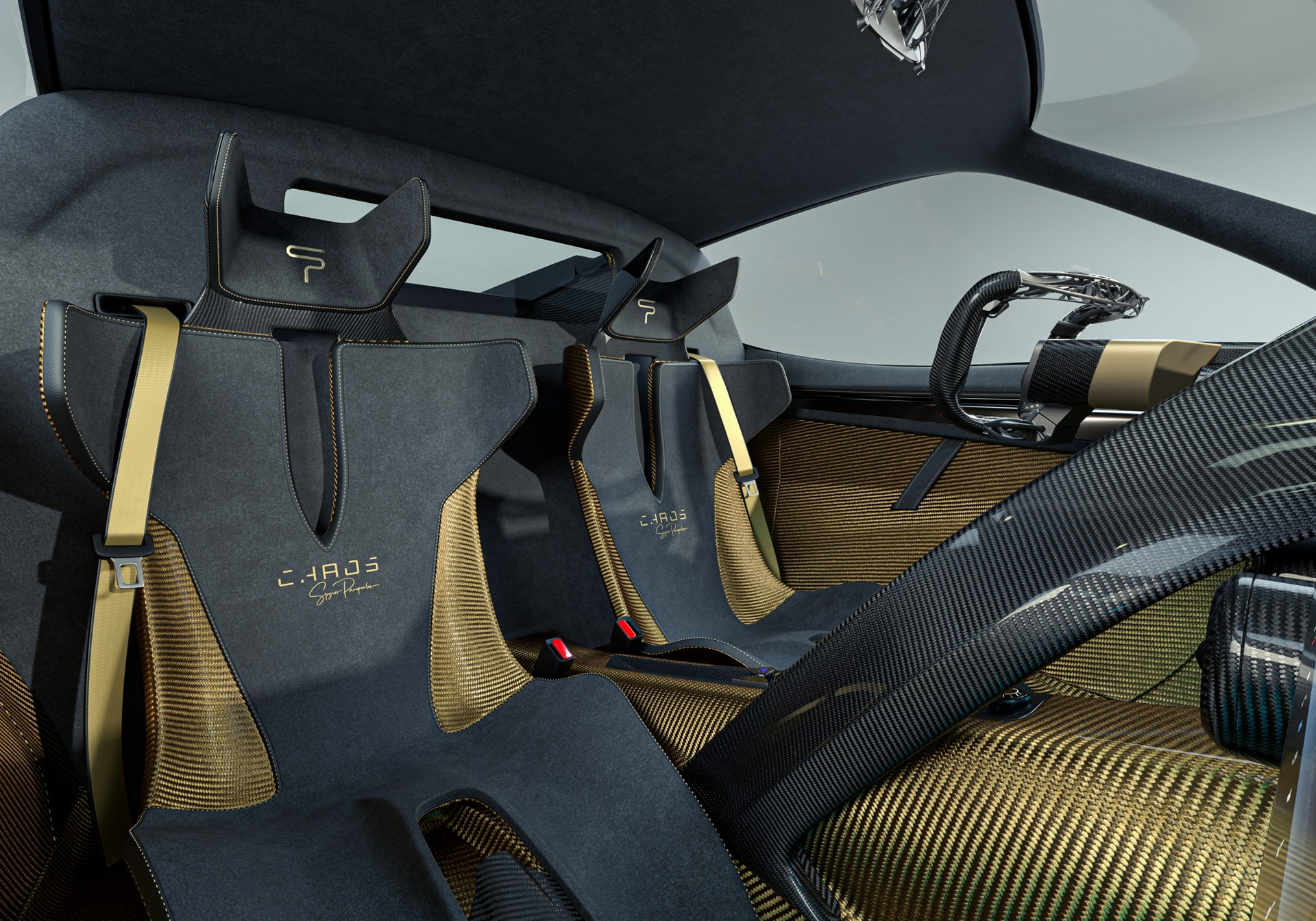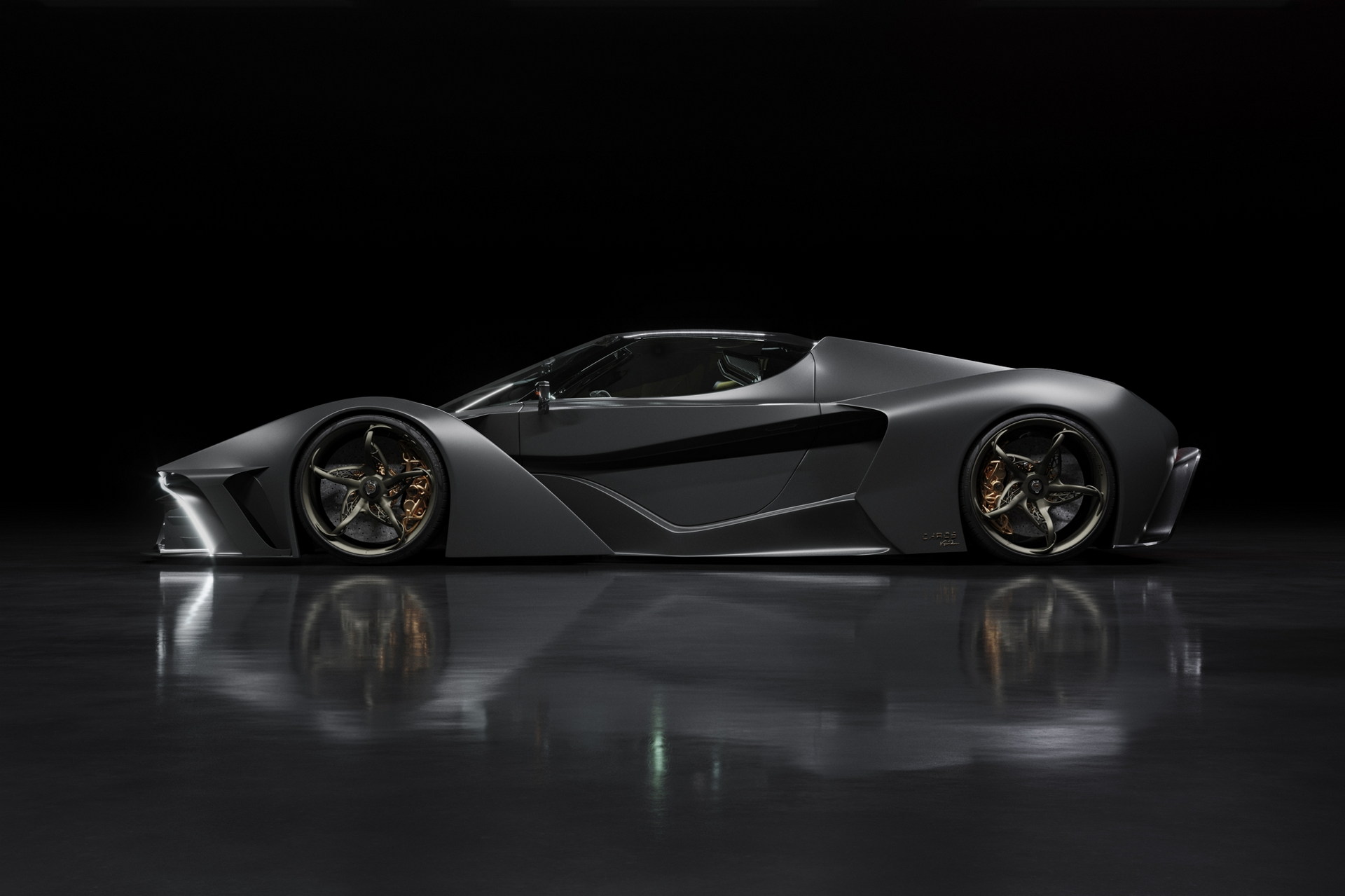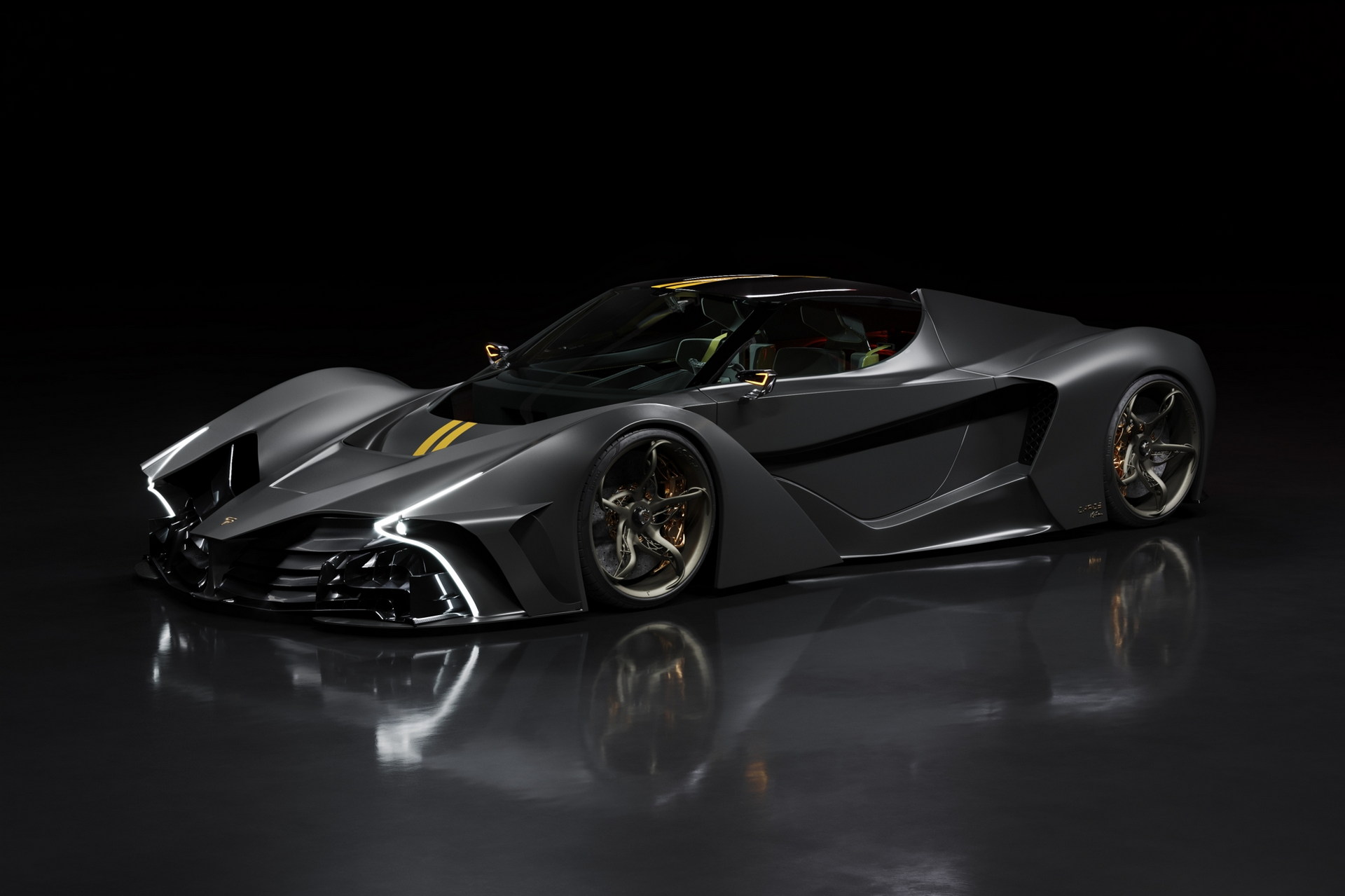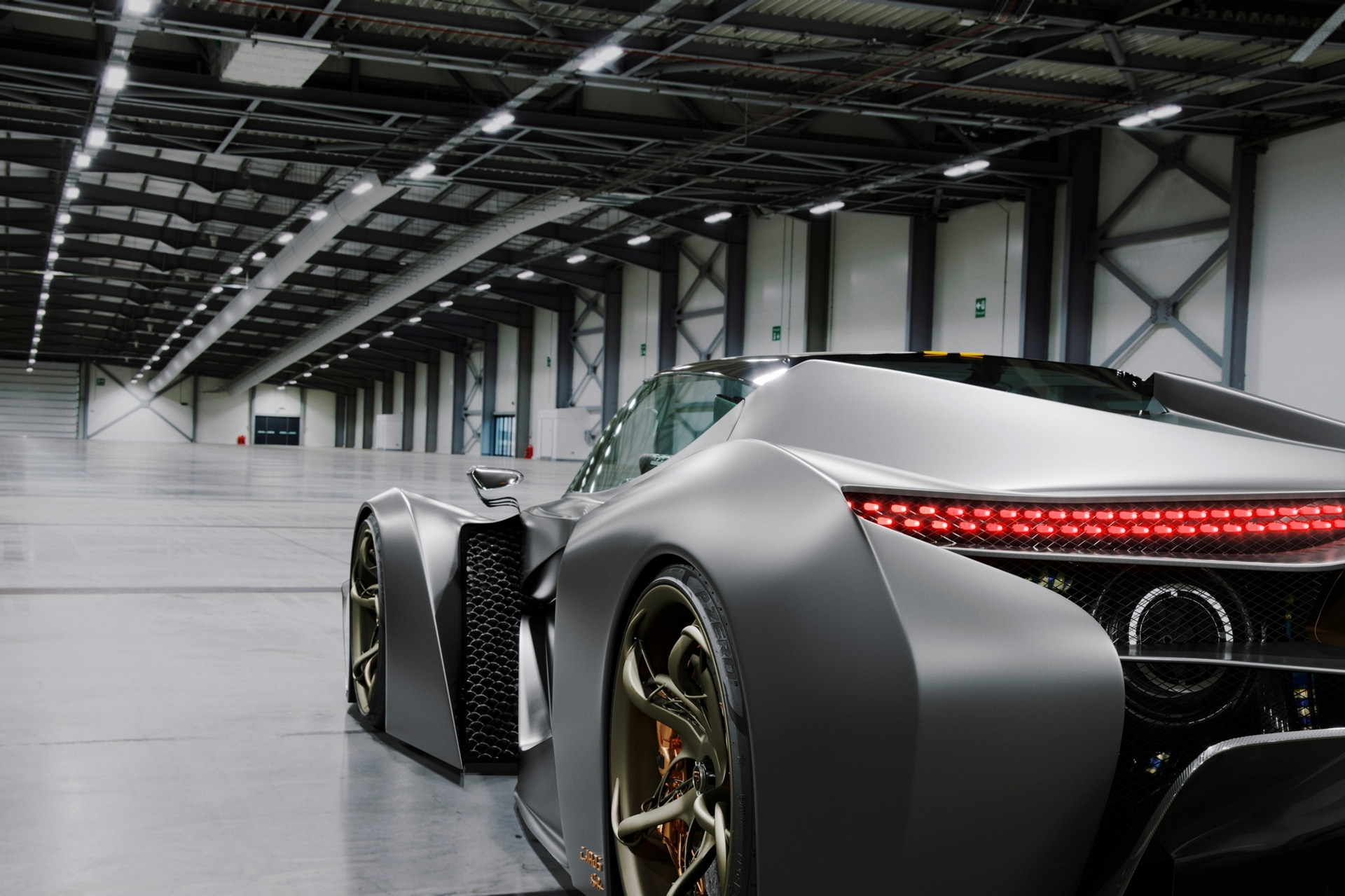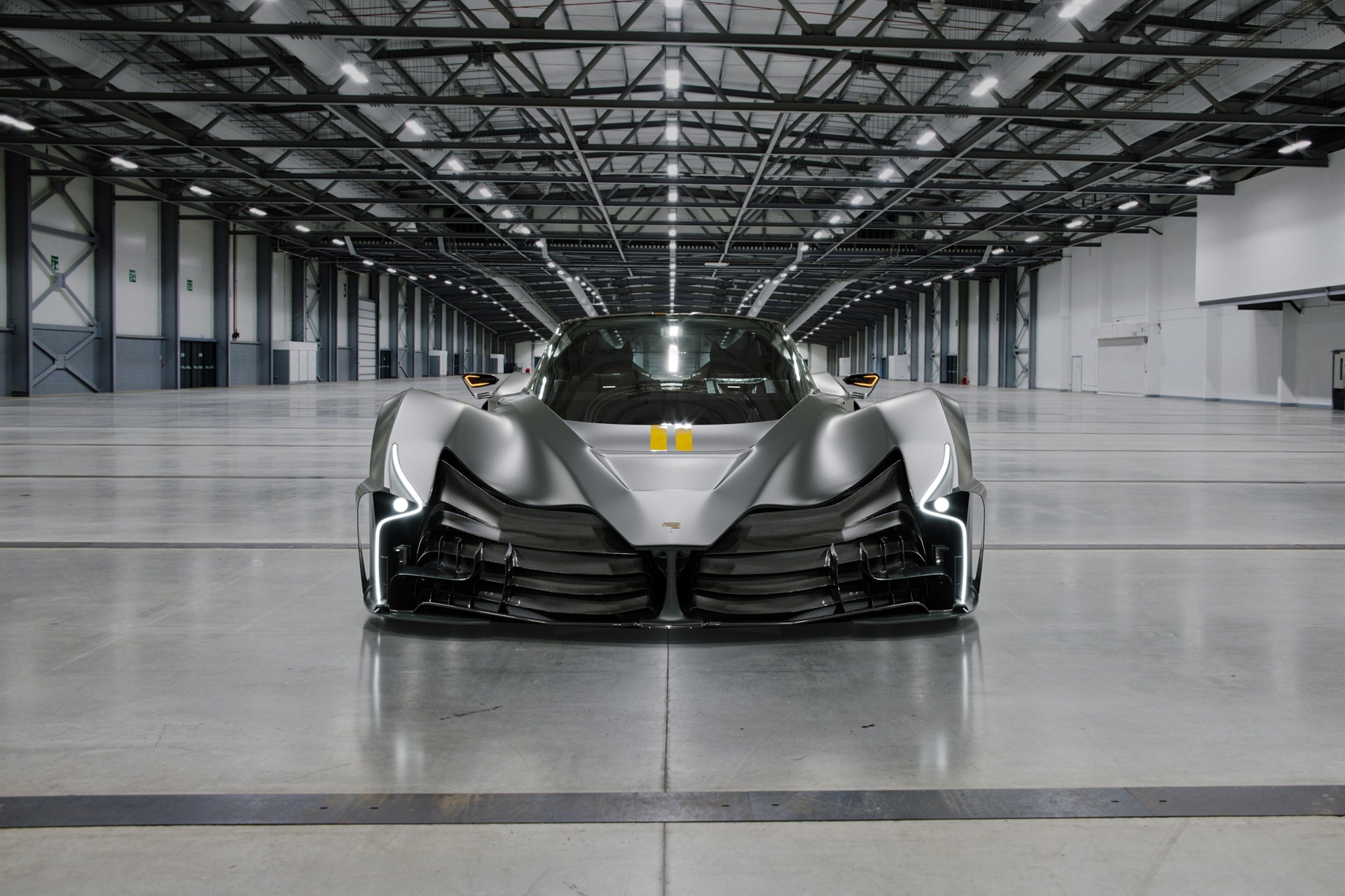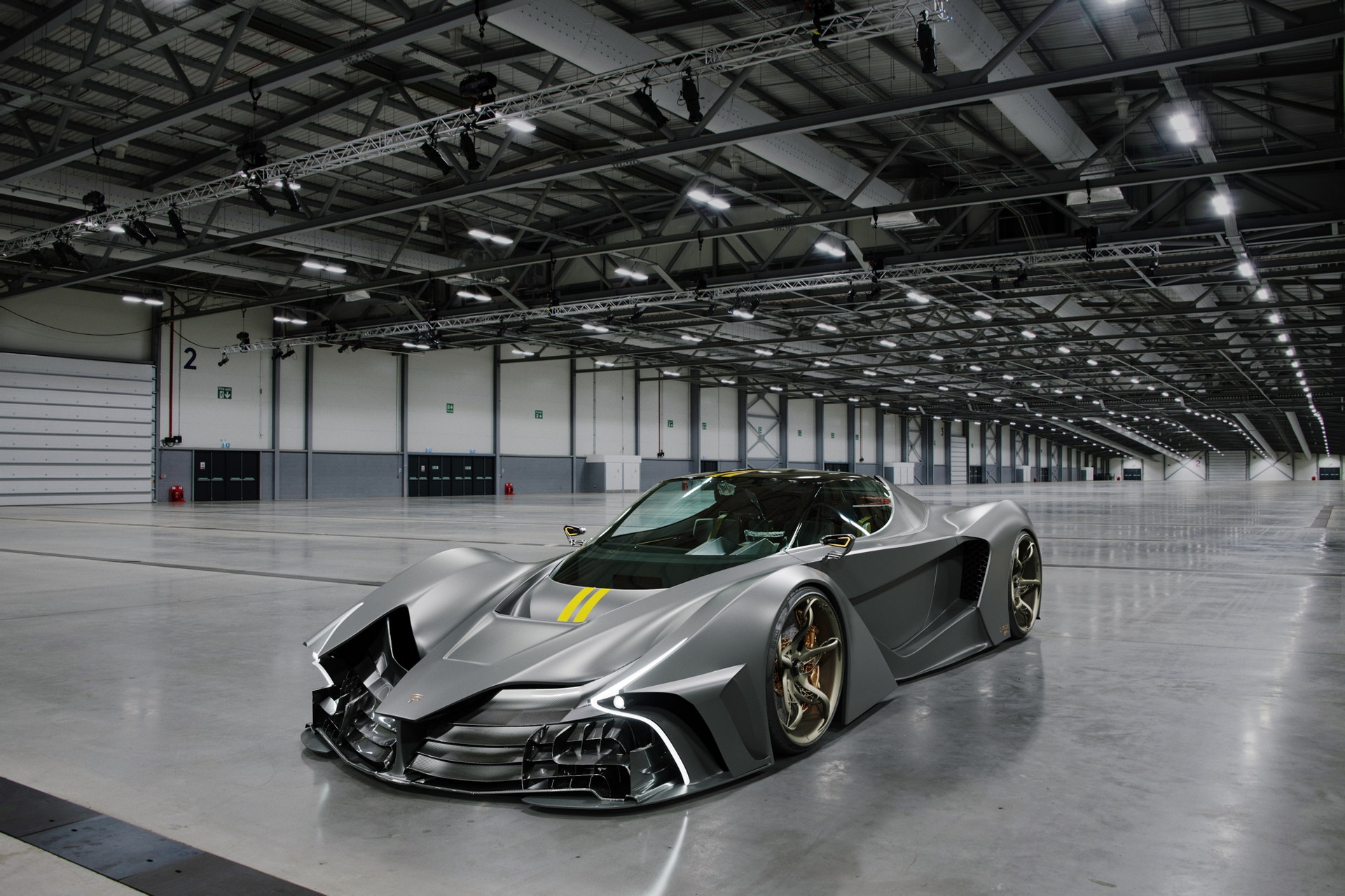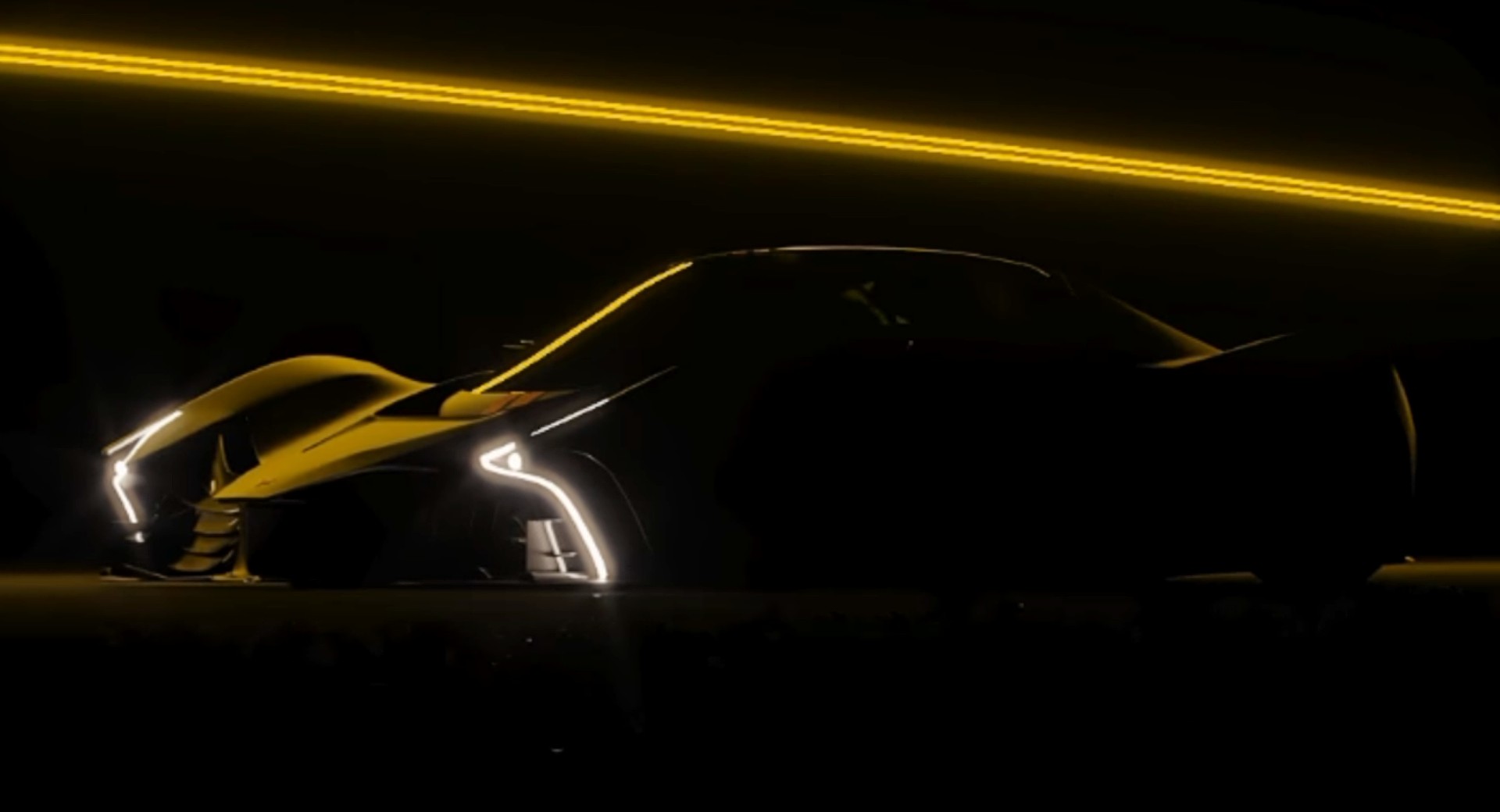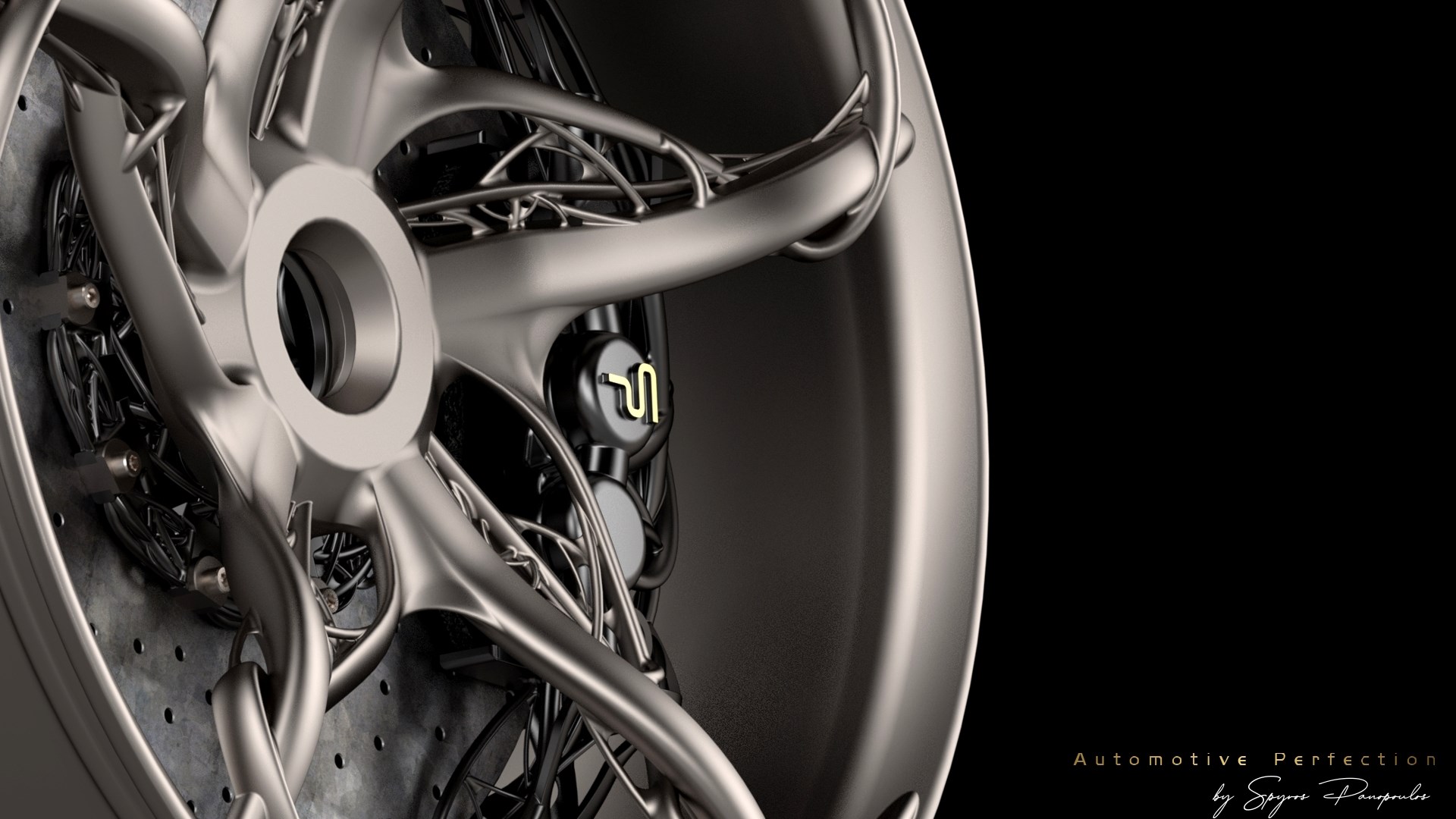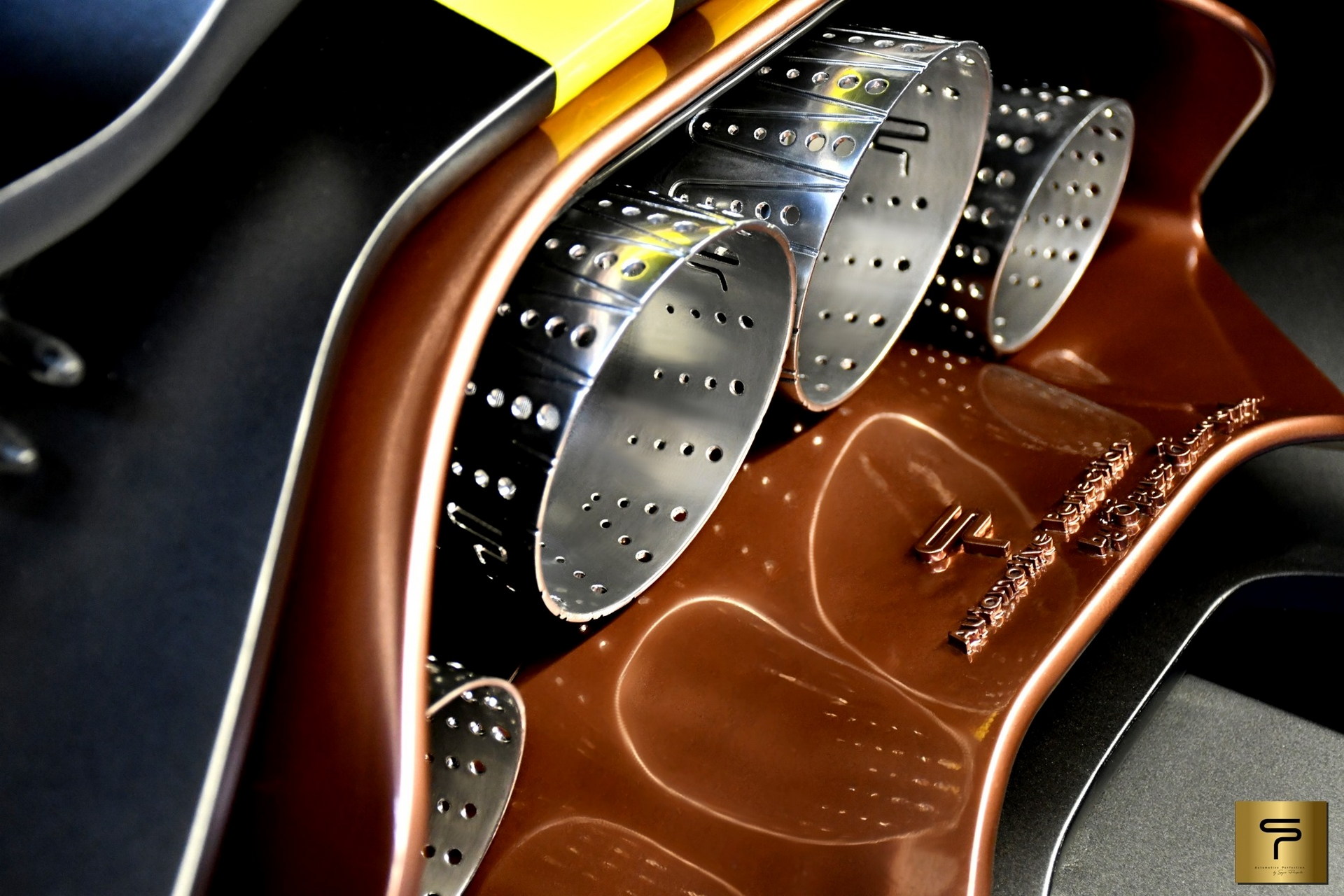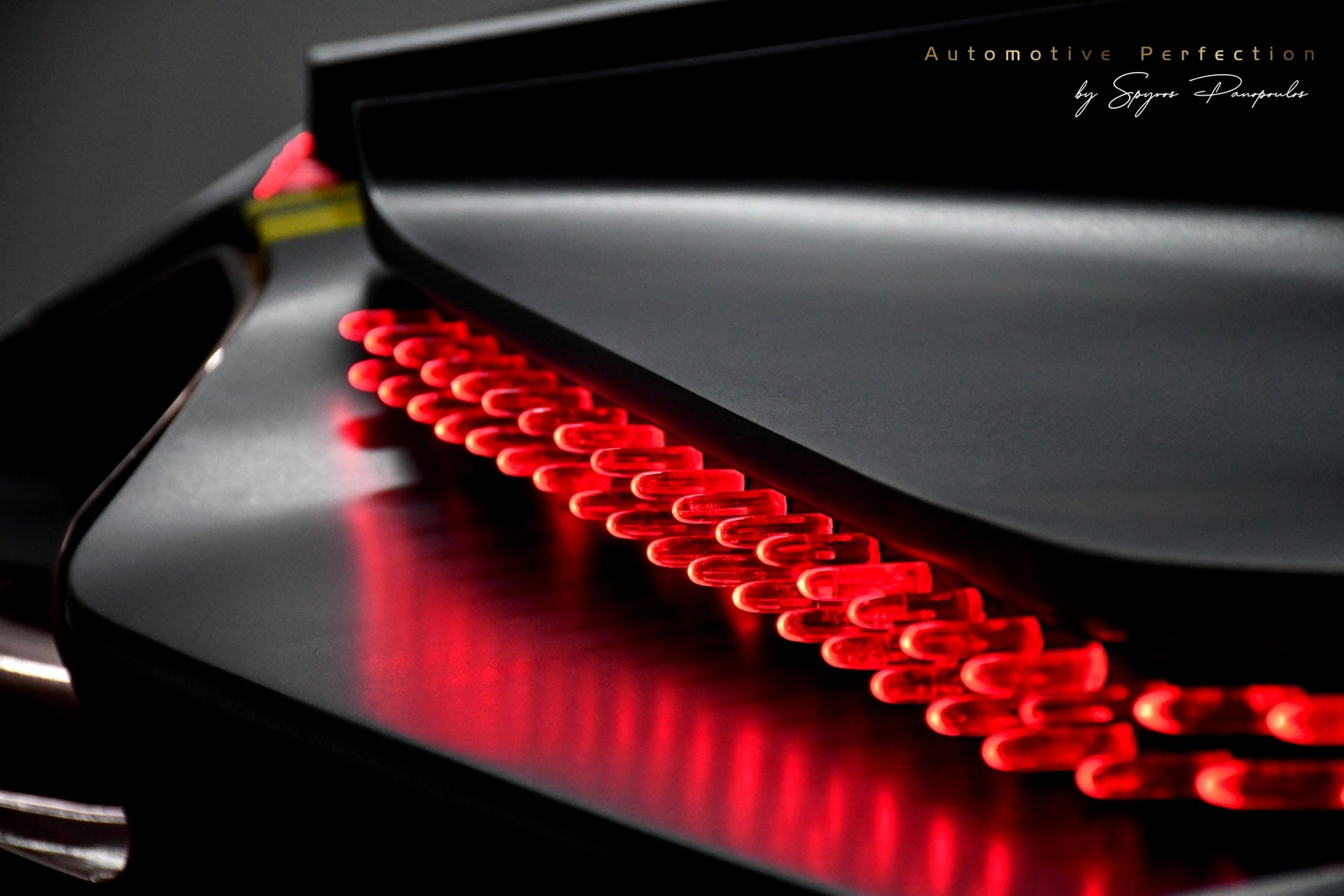The newly established company Spyros Panopoulos Automotive based in Athens, Greece, has released digital pictures of their first model called the Chaos, self-proclaimed to be the world’s first “ultracar”.
Should We Believe Those Bold Claims?
SP Automotive has made some wildly insane (and honestly, questionable without further proof) claims about the Chaos including setting the fastest lap on the Nurburgring, the highest top speed, and the quickest 1/4 mile run. But let’s take a dive into the specifications as they appear on the official website.
Two Engine Choices With 2,049HP Or 3,065HP
The Chaos is powered by a twin-turbo 4.0-liter V10 which will be available in two power levels sending power to all four wheels through a dual-clutch transmission with, in the company’s own words, “seven or eight gears . The motor is designed and developed in-house, with billet aluminum or 3D-printed Magnesium alloy engine block, titanium 3D printed pistons and rods, 3D-printed camshaft, titanium or Inconel valves, plus a pair of turbochargers made of carbon fiber, titanium, magnesium, and ceramic compounds.
Related: CHAOS In Greece With SP Automotive Responding To Accusations From “Haters”
The “Earth Version” produces 2,049 hp (1,528 kW / 2,077 PS) and 1,389 Nm (1,025 lb-ft) of torque with a “10,000-11,000 rpm” redline. This one accelerates from 0-100 km/h (0-62 mph) in a claimed 1.9 seconds, and from 0 to 300 km/h (0-186 mph) in 7.9 seconds. The company says that it needs 8.1 seconds for the 1/4 mile run.
More Crazy Numbers Including 0-62 In 1.55 Seconds
The flagship “Zero Gravity”, which runs on E85 racing fuel, comes with even more power rated at 3,065 hp (2,285 kw / 3,107 PS) and a massive 1,984 Nm (1,463 lb-ft) of torque. The redline is moved to “11,800-12,200 rpm”. According to the company, the flagship Chaos is a car that accelerates faster than an F1 or any other two-wheeled or four-wheeled vehicle that has ever been produced – on paper, as none of this has been back up by any proof.
The “Zero Gravity” allegedly goes from 0-100 km/h (0-62 mph) in 1.55 seconds, from 100 to 200 km/h (62-124 mph) in 1.7 seconds, and from 0 to 300 km/h (0-186 mph) in 7.1 seconds. The claimed 1/4 mile time is an earth-shattering 7.5 seconds which if proven right, would make it a whole second faster than the fully-electric Rimac Nevera (8.58 seconds) which is the current record holder.
Panopoulos says that top speed exceeds the 500 km/h (310 mph) mark which again would make it significantly faster than the SSC Tuatara (282.9 mph / 455.3 km/h) and faster than the Bugatti Chiron Super Sport 300+ (304.773 mph / 490.484 km/h). Spyros Panopoulos claims that the attempt for the fastest production car ever will take place at the Ehra-Lessien track with Red Bull as a sponsor.
F1-Inspired Design With Extensive Use Of 3D Printing And Exotic Materials
The Chaos looks wildly aggressive / exaggerated with sharp edges and complex intakes all around the bodywork. What is questionable to our eyes is the almost nonexistent ground clearance with the long front overhang seeming not compatible with the smallest incline. The suspension travel also looks suspiciously short with the wheels being dangerously close to the wheel-arches, although at the moment all we have is renderings so it is hard to tell.
Other features such as unique 21 and 22-inch alloy wheels, and 3D-printed quad exhaust pipes help the Chaos stand out from other hypercars in the CGI world despite a few borrowed design elements (the Ferrari Enzo / FXX nose, Pininfarina Battista rear, Aston Martin Vulcan taillights etc). The company suggests the Chaos will feature “the best aerodynamic design ever applied to a car”, referring to downforce which is comparable to an F1 single-seater.
For an “ultracar”, the Chaos has a rather massive footprint at 5,053mm (198.9 inches) long – that’s 3 inches more than a BMW 5-Series, 2,068mm (81.4 inches) wide, and 1,121mm (44.1 inches) tall, with a wheelbase of 2,854 mm (112.4 inches). The Earth Version tips the scales at 1,388 kg (2,839 pounds), while the more powerful Zero Gravity is actually lighter at 1,272 kg (2,804 lbs), thanks to more extensive use of exotic materials and the “3D printed Anadiaplasi” design and manufacturing process applied in more of its components.
The monocoque chassis is made of Zylon, while “78% of the body is Anadiaplasi 3D printed from titanium and magnesium alloys and carbon fiber or carbon Kevlar body parts”. Suspension is fully independent double wishbones made of titanium or magnesium. In terms of braking, both variants have carbon ceramic ventilated and cross drilled discs measuring 482 mm (19 inches) at the front and 442 mm (17.4 inches) at the rear, with 3D-printed brake calippers and rotor hubs from Titanium or Magnesium Matrix composite.
Futuristic Two-Seater Cabin With Augmented Reality
Inside, the dashboard looks minimal but also quite futuristic with a yoke-style steering wheel featuring an integrated touchscreen, another wide touhscreen in front of the passenger, only a few physical controls on the center console and a heads-up display. The company used carbon fiber, zylon, titanium, magnesium, and Alcantara for pretty much every single component of the interior.
SP Automotive talks about augmented reality, VR glasses, 5G capabilities, fingerprint recognition, voice commands, and face-recognition cameras reading its driver’s facial expressions in order to adapt the vehicles’ driving characteristics according to their mood and abilities.
20 Cars For Each Continent Sold By Sotherby’s
The company wants to produce a limited number of 20 units of the Chaos for each continent (we’re assuming Antarctica is not on the table) , with the model being exclusively distributed by Sotheby’s. Spyros Panopoulos told CarScoops that they have already sold the first unit with its delivery scheduled for early 2022.
Pricing will start from around €5.5 million (equal to $6.4 million at current exchange rates) for the base 2,000 hp variant, and reach up to €12.4 million ($14.4 million) for the full-spec 3,000 hp model featuring all of the exotic materials and technologies.
When Will We Know If All This Is For Real?
If you want proof of all the aforementioned specs and details, you will have to wait for Chaos’s first public outing that will take place in Athens, Greece in the coming months, and which we will be attending. SP Automotive said it will also provide the car to BBC’s Top Gear television show for its first independent review. As for the record-breaking attempts, those are said to happen sometime in 2022 and 2023.




